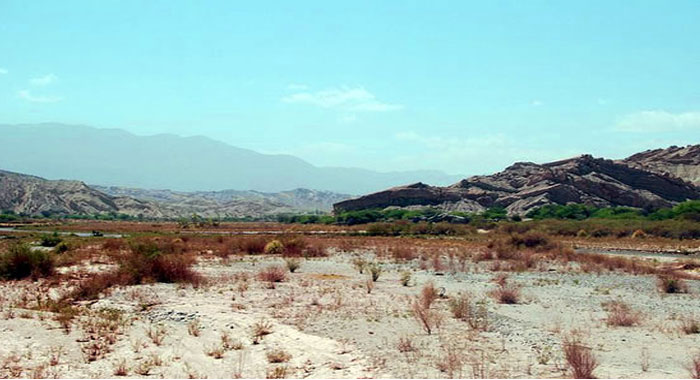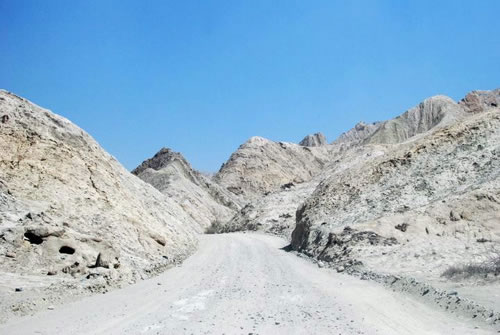The Tour of the Calchaquies Valleys, also known as ‘La Vuela a Los Valles‘ is a drive through Salta that highlights the beauty of this northwestern Argentine province.
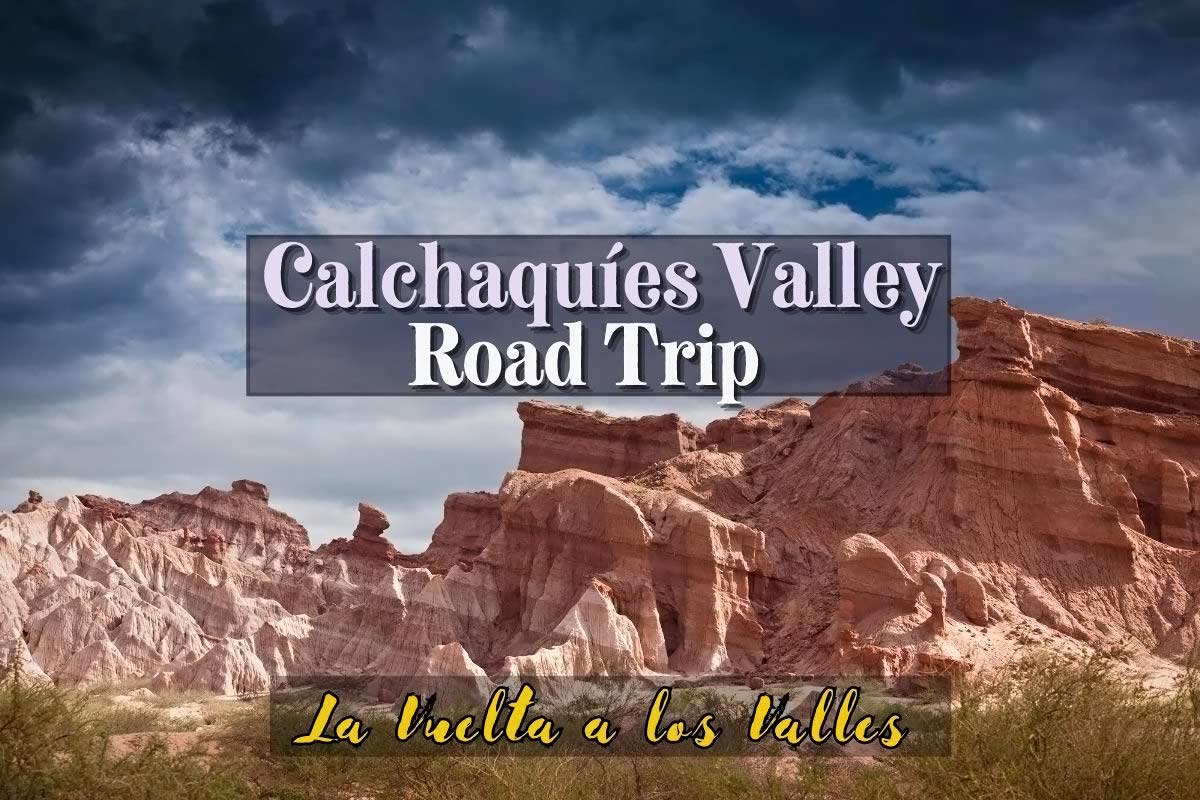
Lunar landscapes, big skies, proud cacti, enchanting wine vineyards and kaleidoscopic color palettes is what ‘La Vuelta a los Valles Calchaquíes‘ roadtrip is known for.
Salta is the province’s capital city and it offers a comfortable point of embarkation to the quaint provincial pueblos, Cafayate and Cachi, that make up this road trip.
Visit both towns on a two or three day trip via the poetic, yet unballyhooed road trip circuit.
Renting a car is the most advantageous method of travel, providing the freedom to stop and capture photos, pick up hitchhikers, hike the terrain, or simply stop and gawk at breathtaking landscapes as frequently as you wish.
Alternately, there are tour buses that embark regularly from Salta.
For more adventurous budget travelers, hitchhiking is relatively easy on this route.
Route 68 headed to Cafayate is also a popular road for biking.
Be sure to bring plenty of water and venture out early, as it can be a brutal dessert experience for the unprepared.
⇒ Instead of renting a car, take a more affordable three-day guided tour of Cafayate, Cachi, and Humahuaca
⇒ See All Salta Tours: Cafayate, the Quebrada de Humahuaca and the Altiplano town of Iruya
Table of Contents
Starting your Salta Roadtrip
Head south from Salta to Cafayate on Ruta 68 towards Valles Calchaquíe.
Located in the center of the Calchaquies Valley, Cafayate is a little less than 190 kilometers from Salta, about three and a half hours by car.
The first part of the circuit is a rather easy drive; a straight shot down a well-maintained two-lane road.
At first you’re greeted with a pleasant, bucolic landscape, but the truly extraordinary scenery begins as you enter into the Quebrada de Cafayate (also called the Quebrada de Las Conchas.)
The ‘Sea Shell Gorge’ begins at the railway ghost town of Alemanía where you can stop to explore the old railroad depot and cross the train trestle to take a dip in the river.
Twenty minutes down the road you’ll come upon an aptly named red rock formation, Garganta del Diablo (Devil’s Throat).
You can make like a mountain goat and scurry up the Devil’s Throat, but beware that getting up is much easier than getting down.
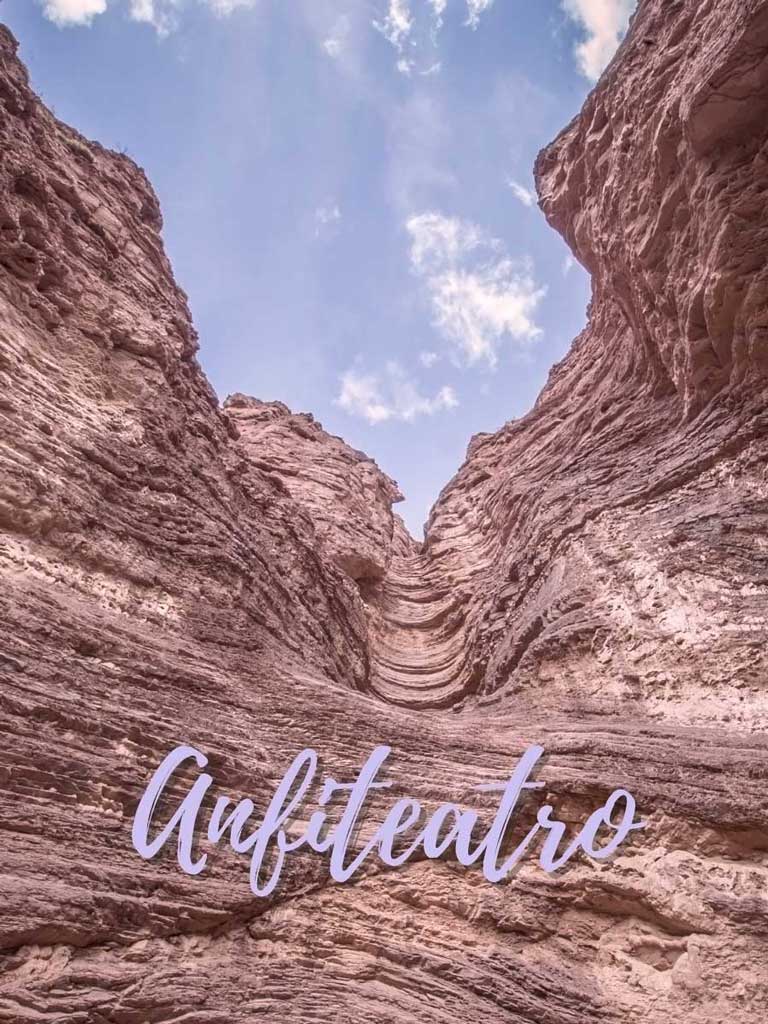
A couple of kilometers further is El Anfiteatro, a natural amphitheater that will delight musicians with its wonderful red rock acoustics.
Those with a guitar in tow will definitely want to check it out.
In the spring and summer you may stumble across a concert here.
As you continue down the road you’ll come across a slew of capricious rock formations including El Sapo (The Frog), El Fraile (The Friar) and El Obeslico (The Obelisk).
Arrival in Cafayate
Once you reach Cafayate, where most taking this drive stay overnight, drop in the tourist office located in the central Plaza San Martin (Guemes and San Martin) for maps, brochures, information on activities and tours.
Be sure to pick up for a map of the local bodegas (wineries).
If you’re arriving here on a Friday or Saturday night reservations are recommended.
Options range from to a low-cost dorm bed in a hostel to a range of moderately-priced hotels to the luxury hotel-spa, Patios de Cafayate.
Activities in Cafayate
In spite of a growing tourism, Cafayate has retained its small-town soul.
Wander a few blocks away from the main plaza and you’ll find yourself deep inside a vibrant neighborhood of locals, unconcerned with the presence of outsiders.
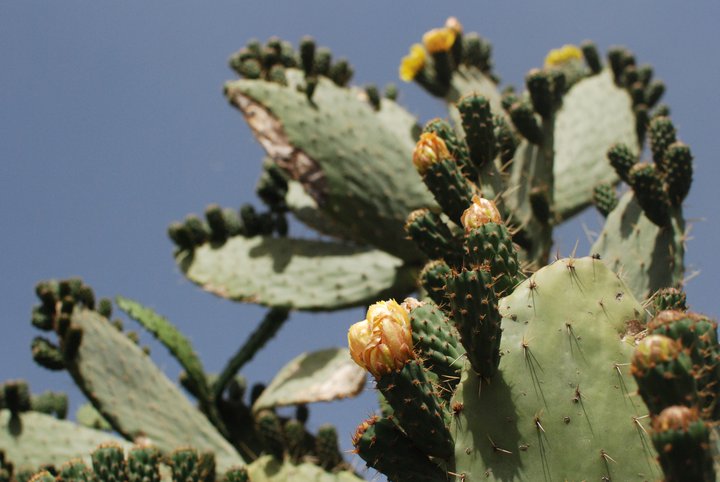
Children play soccer in the streets, mothers hang clothes outside to dry, and sleepy dogs lay wherever they may.
Be sure to take a step inside Nuestra Señora del Rosario, an impressive cathedral in the main plaza.
Any given dusty lane will lead you to a vineyard open for tours and wine sampling.
Cafayate’s dry climate, high altitude 1,660 meters above sea level, hot days and cool nights makes it a prime location for wine production.
Cafayate is famous for its Torrontés grape, used to create the dry, fruity white wine of the same name.
This particular provincial wine has increasingly received international praise, earning it the notable title of ‘The white wine of Argentina.’
For more information on Cafayate’s wine history and culture, visit the Museo de Vitivinicultura (Güemes Sur and Colon) and read about winery tours in Cafayate.
The trip to Río Colorado, five kilometers outside of town, is nice if you’re looking for some outdoors activity.
Hike upstream for about one and a half hours to a waterfall with a pleasant area for a swim.
Taxis are available from Cafayate to the trail entrance. It can be difficult to find taxis for the ride back to Cafayate though.
Try arranging a pickup time with your driver, or bring water for the 5km walk back.
Biking is an easy option when the weather is nice; find bike rentals around the plaza.
For those who don’t want to bother with a trail map and compass, there are plenty of guides available in town for reasonable prices.
Just an hour trip south from Cafayate by car, lies Quilmes, a fascinating pre-Inca, indigenous ruins resting in a lonely dessert.
Pay a small fee to visit the relics of the once-thriving pre-colonial city.
Day Two: Cafayate to Cachi on Route 40
On day two of your drive you’ll take Ruta 40 out of town towards Cachi.
Ruta 40 winds seductively through Quebrada de las Flechas (Narrow Gorge).
This trip between Cafayate and Cachi offers some of the most stunning, arid visuals on the planet.
Be attentive while driving on the famous Route 40 — at times it is a precarious, narrow gravel road,
The small mountainous pre-colonial town of Cachi lies 165 kilometers north of Cafayate (about five and a half hours by car).
Once you arrive in Cachi, rest up and try some northern Argentine favorites like empanadas, locro or tamales.
The town has quite a few shops selling typical northern Argentine arts and crafts.
Most everything you need, including the Cachi Tourist Office, is centered around the main plaza.
Visit the Church of San Jose and the small but interesting archeology museum.
With a spectacular panoramic view of the town and the Nevado de Cachi mountain range, Cachi’s picturesque hilltop cemetery is a must-see attraction in the 5,000-person town.
If you have time to stretch your trip out you can stay in Cachi overnight.
Before heading out of town, pick up some local mountain herbs and spices for sale in the plaza.
The trip back to Salta from Cachi via Route 40 is a strikingly beautiful ride.
The trip is a total 160 kilometers, about three hours) through the Quebrada de Escoipe and Cuesta del Obispo.
Visual delights await you the final hours of the trip, with an ever-changing landscape that sometimes appears to pertain to another planet.
— by Avery White
Check Availability of Car Rental in Salta
La Vuelta de Los Valles three-day drive round-up:
Day 1: Salta to Cafayate: 180km. Good road conditions. 3.5 hours (through Quebrada de Cafayate)
Day 2: Cafayate to Cachi: 165km. Rough road conditions 5.5 hours. (through Quebrada de las Flechas)
Day 3*: Cachi to Salta: 160km. The first 1/3 of the route is unpaved followed by paved roads. Some parts of this route wind around steep mountain terrain. 3-4 hours (through the Quebrada de Escoipe and Cuesta del Obispo)
* For a two-day trip, Cafayate to Salta can be done in one long day.
• It is important to note if driving that there are not many gas stations in between Salta and Cafayate, and no gas stations between Cafayate and Cachi.
There are several gas stations in Cafayate and Cachi. It’s best to fill up the tank before leaving Salta.
→ Five incredible Wine Tours in Cafayate
→ See a Five Day Customizable Salta Itinerary
⇒ See all Salta Tours Available & Book Online Now
→ Compare prices for car rental and get 15% off on our Car Rental Page

